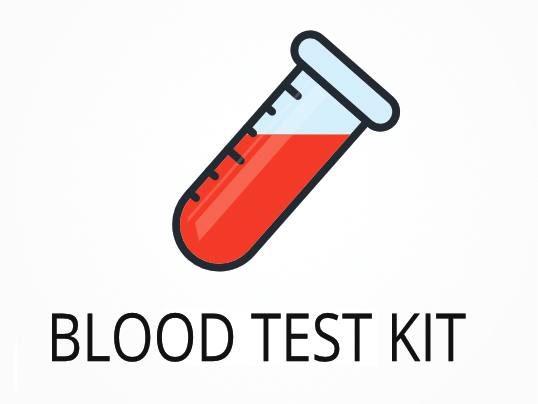| Test Name | Reference Range | What This Marker Means | High Levels of Immediate IgE Food Allergy Test Basic |
|---|---|---|---|
| Almond IgE | <0.35 kU/L | Measures allergic response to almond proteins. High levels suggest your immune system reacts to almonds, which may cause symptoms like hives or swelling. | High levels of Almond IgE mean you may have an immediate allergy to almonds. |
| Blue Mussel IgE | <0.35 kU/L | Checks for allergic reaction to blue mussel. High results can indicate risk for symptoms like swelling or digestive upset after eating mussels. | High levels of Blue Mussel IgE mean you may react to blue mussel. |
| Brazil Nut IgE | <0.35 kU/L | Detects allergy to Brazil nuts. High levels can cause symptoms like itching, swelling, or digestive issues after eating Brazil nuts. | High levels of Brazil Nut IgE mean you may have an allergy to Brazil nuts. |
| Buckwheat IgE | <0.35 kU/L | Shows if your immune system reacts to buckwheat. High results may cause symptoms like rash or stomach pain after eating buckwheat. | High levels of Buckwheat IgE mean you may react to buckwheat. |
| Coconut IgE | <0.35 kU/L | Measures allergic response to coconut. High levels can cause skin or digestive symptoms after eating coconut or coconut products. | High levels of Coconut IgE mean you may have an allergy to coconut. |
| Cod IgE | <0.35 kU/L | Checks for allergy to cod fish. High results may cause symptoms like hives, swelling, or breathing issues after eating cod. | High levels of Cod IgE mean you may react to cod. |
| Corn IgE | <0.35 kU/L | Shows if you have an allergic reaction to corn. High levels can cause symptoms like rash, stomach pain, or sneezing after eating corn. | High levels of Corn IgE mean you may have an allergy to corn. |
| Cow’s Milk IgE | <0.35 kU/L | Detects allergy to cow’s milk proteins. High results may cause symptoms like hives, stomach upset, or skin irritation after drinking milk or eating dairy. | High levels of Cow’s Milk IgE mean you may react to cow’s milk. |
| Egg White IgE | <0.35 kU/L | Measures allergic response to egg white proteins. High levels can cause symptoms like rash, swelling, or stomach pain after eating eggs. | High levels of Egg White IgE mean you may have an allergy to egg whites. |
| Hazelnut IgE | <0.35 kU/L | Checks for allergy to hazelnuts. High results may cause symptoms like itching, swelling, or digestive upset after eating hazelnuts. | High levels of Hazelnut IgE mean you may react to hazelnuts. |
| Oat IgE | <0.35 kU/L | Shows if you have an allergic reaction to oats. High levels can cause symptoms like rash or stomach pain after eating oats. | High levels of Oat IgE mean you may have an allergy to oats. |
| Peanut IgE | <0.35 kU/L | Detects allergy to peanuts. High results may cause symptoms like hives, swelling, or digestive upset after eating peanuts. | High levels of Peanut IgE mean you may react to peanuts. |
| Rice IgE | <0.35 kU/L | Shows if your immune system reacts to rice. High levels can cause symptoms like rash or stomach pain after eating rice. | High levels of Rice IgE mean you may have an allergy to rice. |
| Salmon IgE | <0.35 kU/L | Checks for allergy to salmon. High results may cause symptoms like hives, swelling, or breathing issues after eating salmon. | High levels of Salmon IgE mean you may react to salmon. |
| Sesame IgE | <0.35 kU/L | Measures allergic response to sesame seeds. High levels can cause symptoms like rash, swelling, or digestive upset after eating sesame. | High levels of Sesame IgE mean you may have an allergy to sesame. |
| Shrimp IgE | <0.35 kU/L | Detects allergy to shrimp. High results may cause symptoms like hives, swelling, or digestive upset after eating shrimp. | High levels of Shrimp IgE mean you may react to shrimp. |
| Soy IgE | <0.35 kU/L | Shows if you have an allergic reaction to soy. High levels can cause symptoms like rash, swelling, or stomach pain after eating soy products. | High levels of Soy IgE mean you may have an allergy to soy. |
| Tuna IgE | <0.35 kU/L | Checks for allergy to tuna. High results may cause symptoms like hives, swelling, or digestive upset after eating tuna. | High levels of Tuna IgE mean you may react to tuna. |
| Wheat IgE | <0.35 kU/L | Measures allergic response to wheat proteins. High levels can cause symptoms like rash, swelling, or stomach pain after eating wheat. | High levels of Wheat IgE mean you may have an allergy to wheat. |
| Total IgE | 0-100 kU/L | Shows the total amount of IgE antibodies in your blood. High levels can suggest allergies, asthma, or other immune responses. | High levels of Total IgE mean your immune system is reacting to one or more allergens. |
Medical Review Board
Reviewed by Jeff Donohue M.D. from Body Logic and Brady Hurst DC, CCCN. Written by True Health Lab’s team of editorial health contributors.
Disclaimer: This information is for educational purposes only and not intended as medical advice. Consult your healthcare provider for personalized guidance.
Why Customers Trust True Health Labs - What People are saying
Also rated 4.6 out of 5 based on 3452 ShopperApproved reviews- See all TrueHealthLabs.com reviews.






